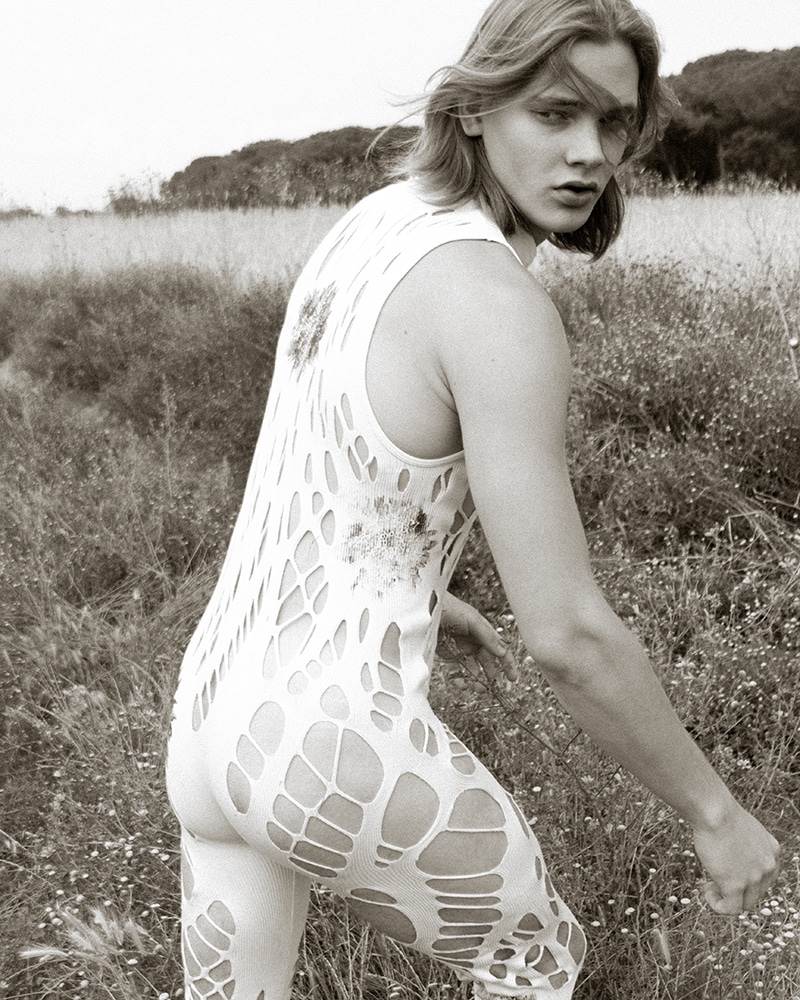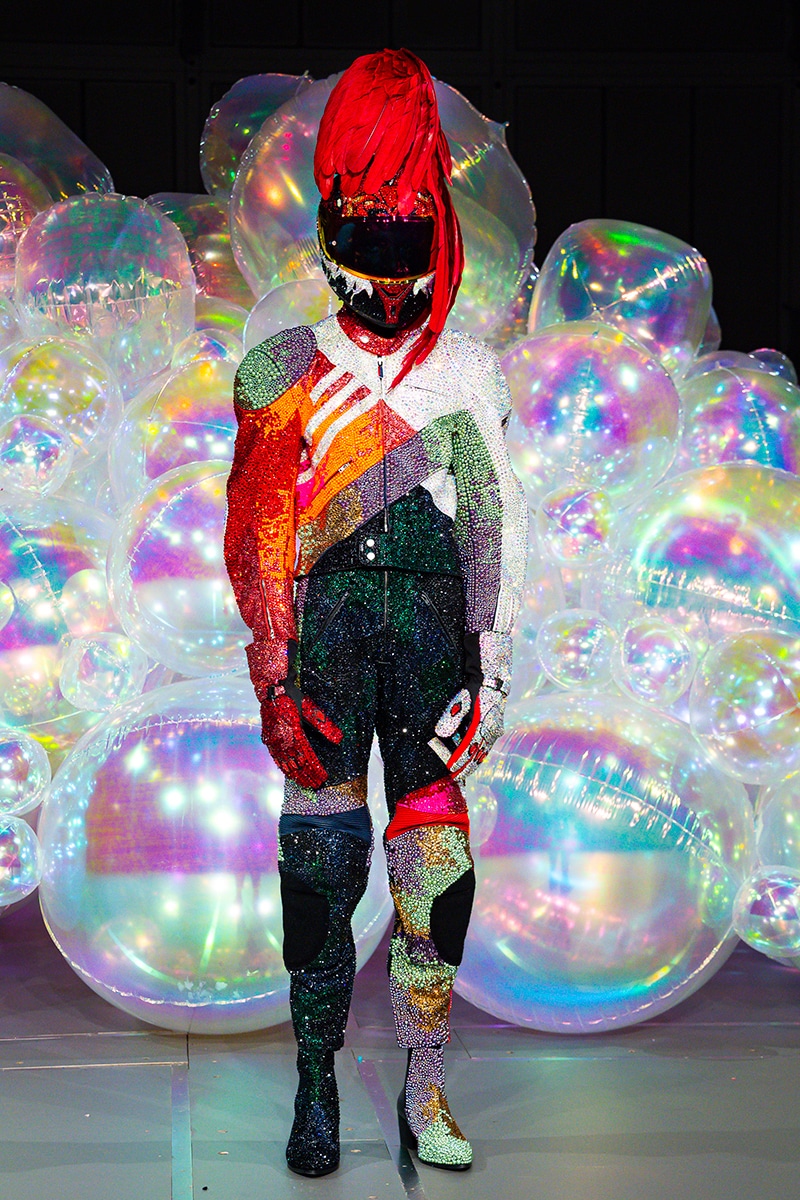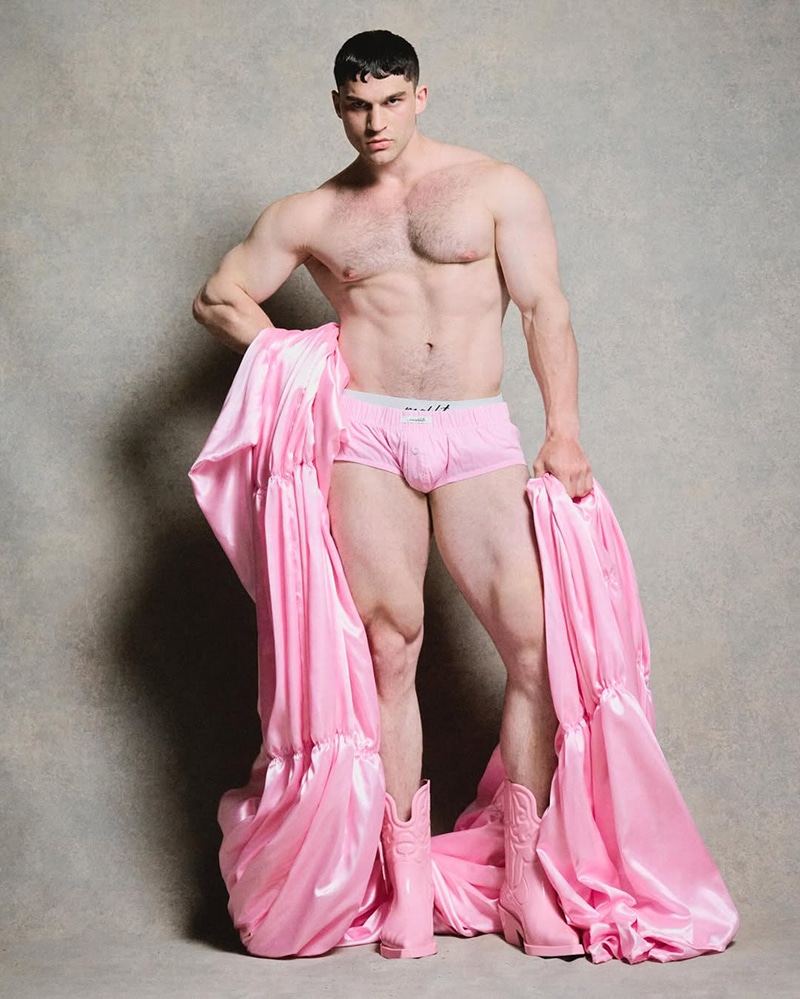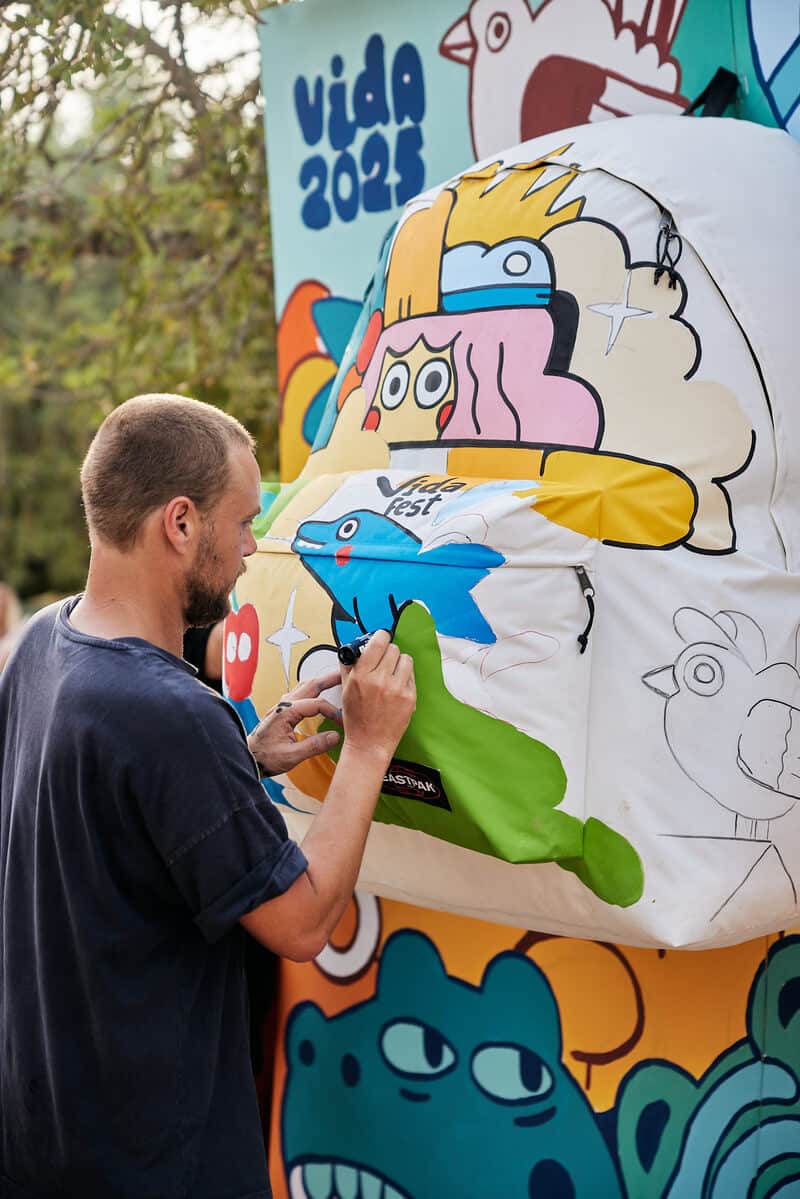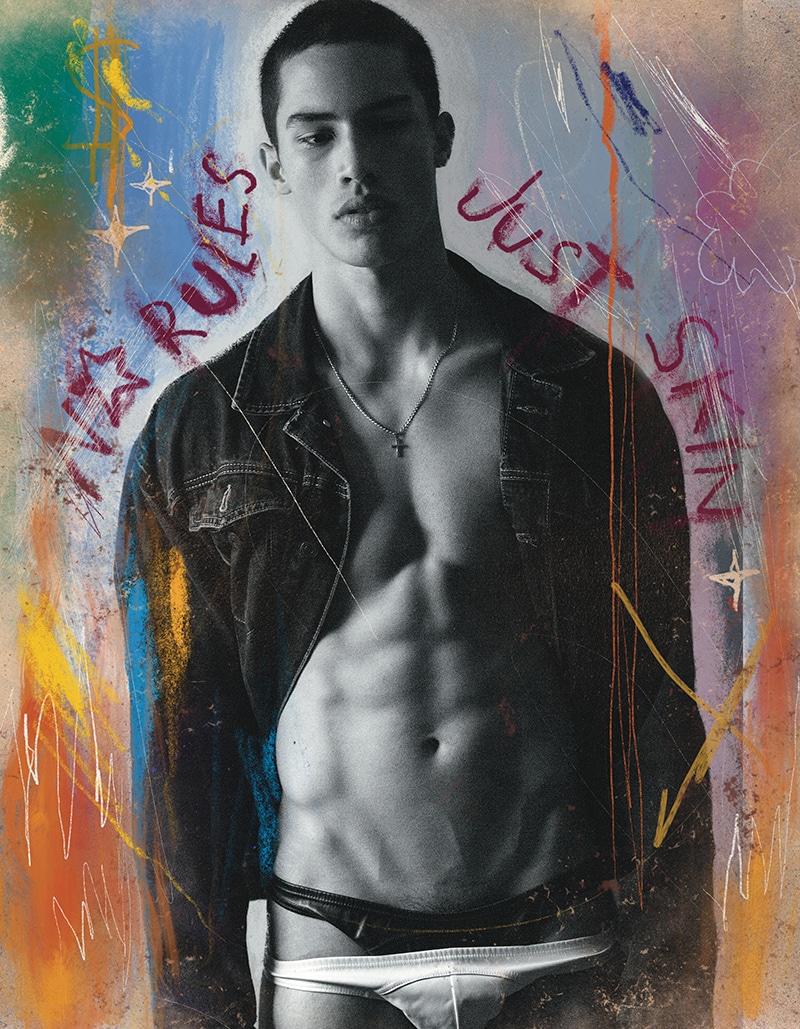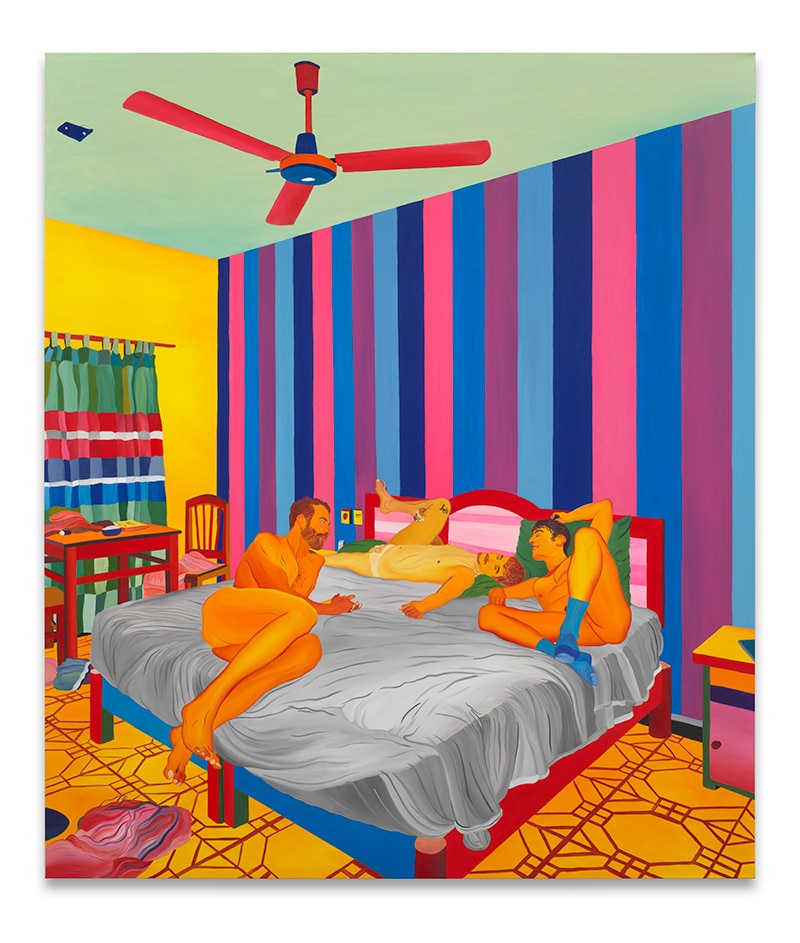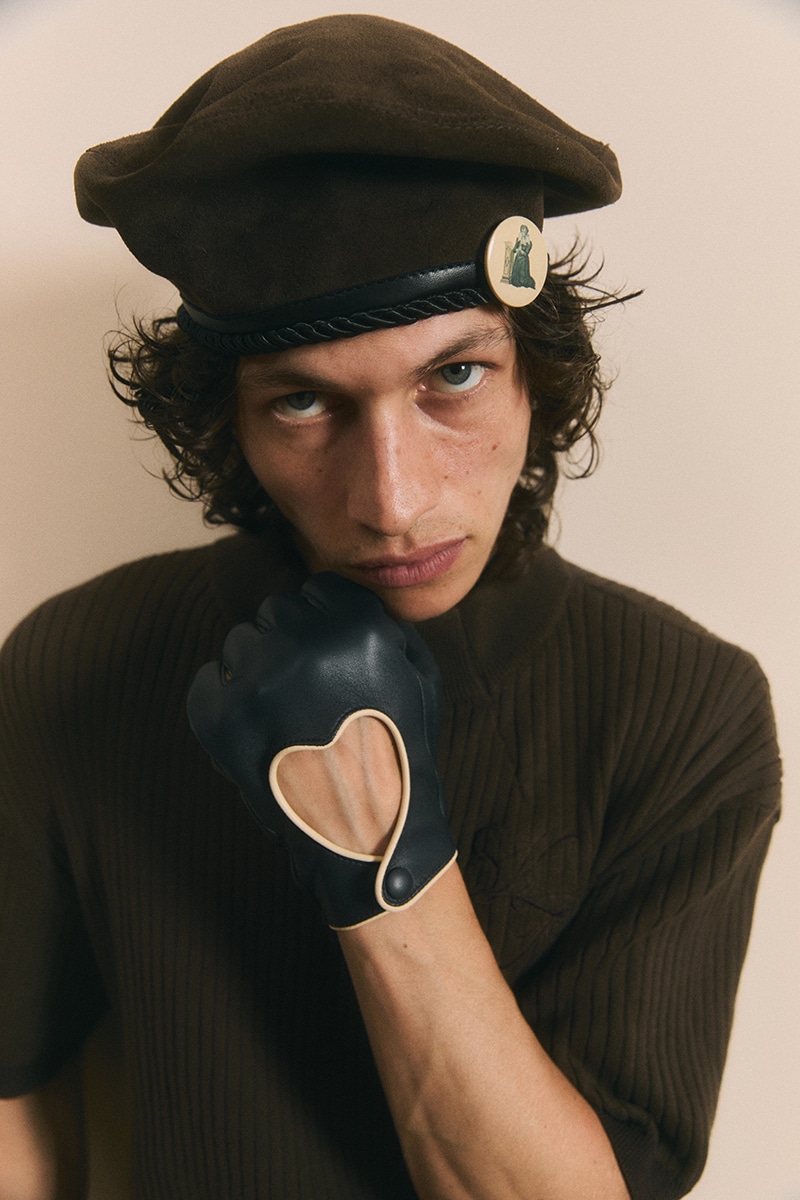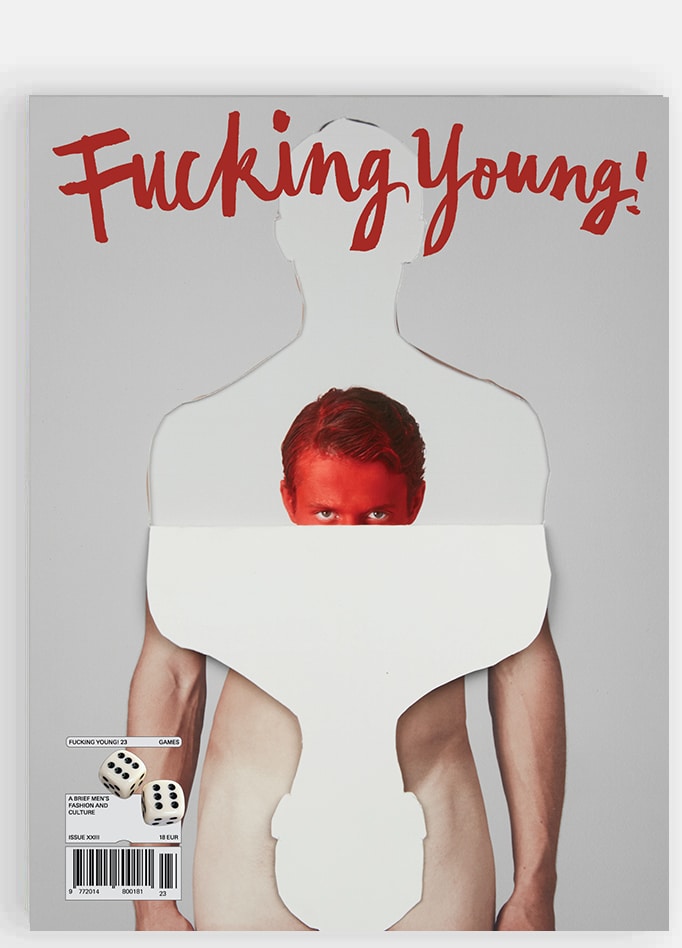
The young Catalan photographer Isaac Flores has once again surprised us all thanks to the publication of his second photobook, entitled “Herencia”. The first, “Barcelona se muere” was already a blow to the conventions that still live in that Spain so stale that continues to be sadly threatening. Now, Isaac has re-discovered himself and shows us his concerns from a different prism, connecting past, present and future through Andalusian folklore and the most controversial and rebellious figures of Spanish transformationism. From Samantha Hudson to Megane Mercury, going through all those classic characters that have been inhabiting the nocturnal imaginary of a city like Barcelona. The beauty of the subversive, the sensuality and glamor of rebellious spirits and the inquisitive taste of a photographer who wishes to show the world a fascinating and unfairly treated reality, that is Isaac Flores, to whom we must thank for his always unstoppable curiosity.
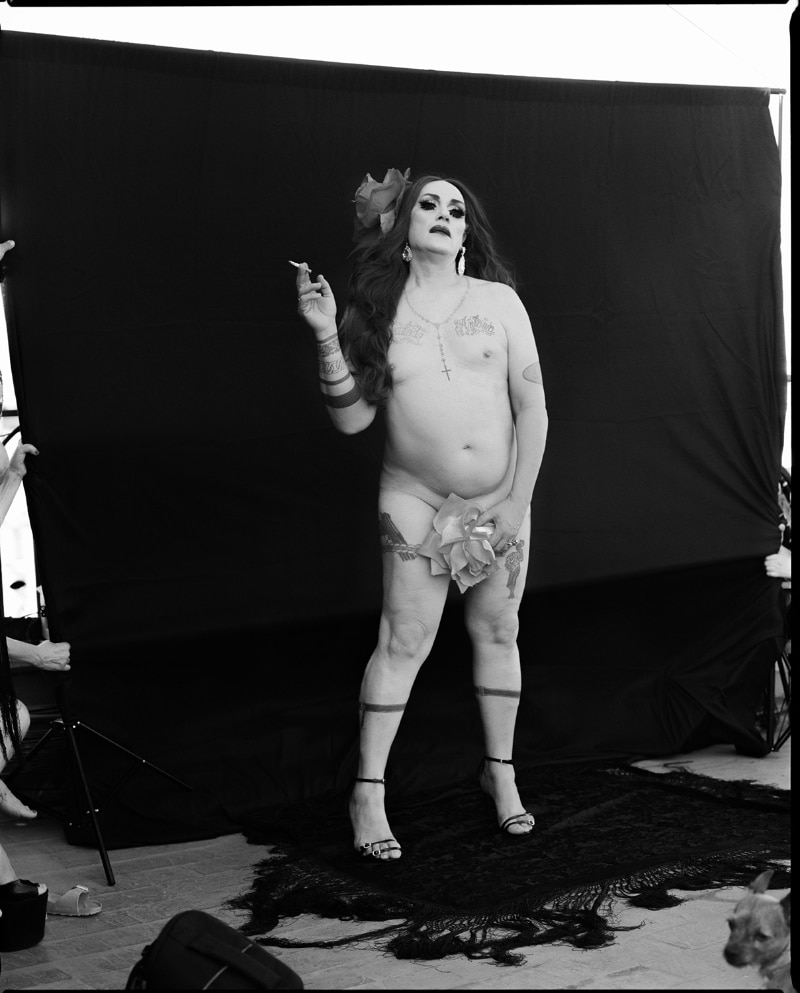
Abelarda
“Herencia” arises from a moment that affected us all individually but also socially. I would like to know at what vital and creative moment the pandemic caught you when we had to lock ourselves up at home….
I had job stability in nightlife, and a studio and all of that disappeared. When I had been in the temporary employment regulation file for two months and with no plans to return to my job in the future, my mother encouraged me to launch the idea of making another photography book because I was very discouraged. So in the end, I decided to take advantage of the confinement to start shaping Herencia and get as bitter as possible.
I want to know more about you, about your life. Why this interest in the dissident? Why does Isaac Flores like the subversive?
I have never liked reality, neither when I was little, nor when I was older, that is something very common within the Collective, so I started looking for forms of escapism and expression at an early age through imagination, watching movies, drawing, listening to music … then in my adolescence photography appeared… I suppose that my love for the subversive is a mixture of empathy and admiration for seeing someone go against the established because the other option is to be dead in life.
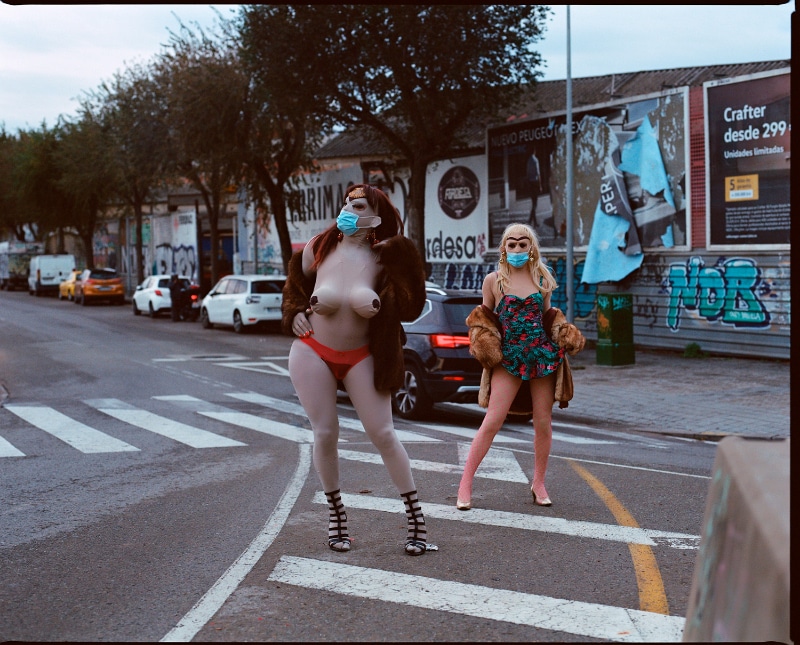
Woolman Family
The central axis of “Inheritance” is the Andalusian folklore that so attracts artists of all kinds, from painters to novelists. What is your relationship with this type of folklore so characteristic?
My father was an Andalusian emigrant, he came to live in Barcelona with his family in the 1970s along with almost a million other Andalusians to look for a better future. My first relationship with Andalusian folklore was with the music that the women around me listened to. Even though she was from Murcia, my mother liked Isabel Pantoja a lot, she played her records super loud. My grandmother was more into Lola Flores, she loved watching ‘Cine de Barrio’. So I guess that was the germ until when I was older I discovered on my own the copy, the imaginary, the transformism, and José Pérez Ocaña, that was a point of no return.
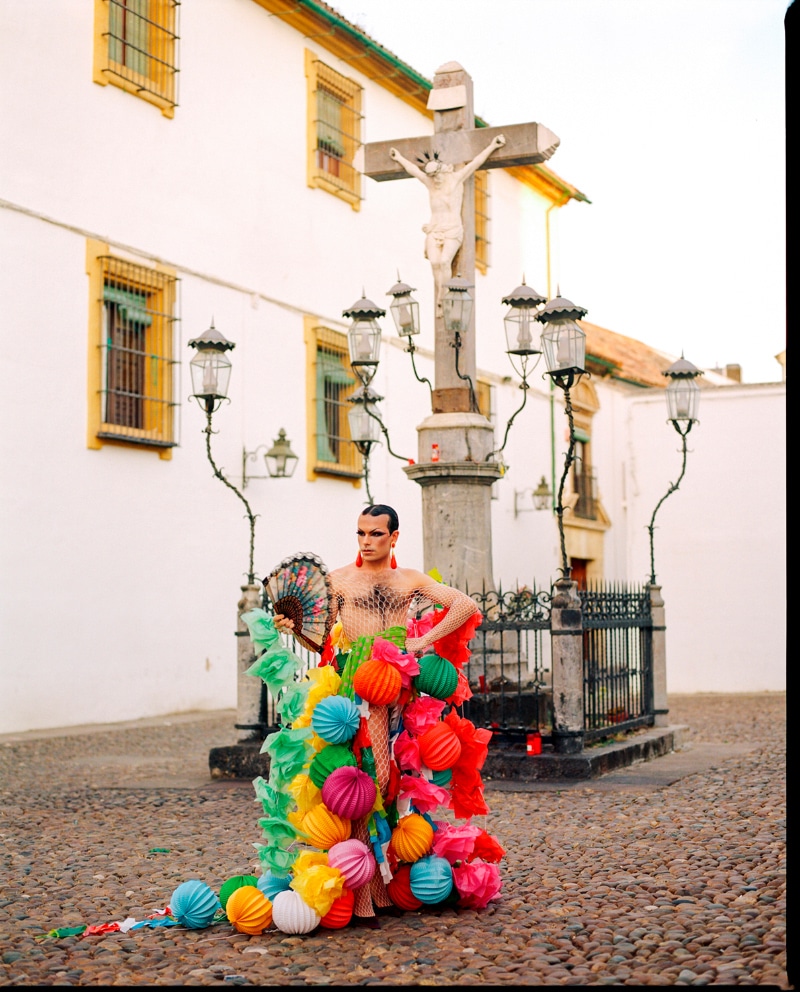
Carvento
I would like to know what you think is the link that unites Andalusian folklore with the transformism that your book talks about…
During the Franco dictatorship, Andalusian folklore was the hallmark of Spain aesthetically and musically, it was the pop of the time. What led to transformism to follow the steps of copla singers, folkloric imitators, comedians, flamenco dancers… You cannot understand transformism in Spain without Andalusian folklore. For me, it was important to reflect in the book a bit on classic transformism and its evolution with the new generations that embrace it and reinvent it in a contemporary way, as both are equally necessary and can coexist.

Fernanda & Abelarda
In this book you talk about the sexual and social boom that our country has experienced in recent years, opening up to new sexualities, and new genders… but I wonder, is our country up to the circumstances of all the people who have discovered themselves?
I believe that there is an unpaid debt with past generations who have not been able to work, or develop their lives in the same conditions as the rest of the population due to their identity or sexuality in the dictatorship due to the ‘Ley de Vagos y Malenates’ and even in later years because of social stigma. Now, It seems that there is a desire for change, a ‘Trans Law’ has been approved, which is a historical fact in our country. We live in a polarized society, yet you see other countries and you realize that you have to give thanks for being born here.
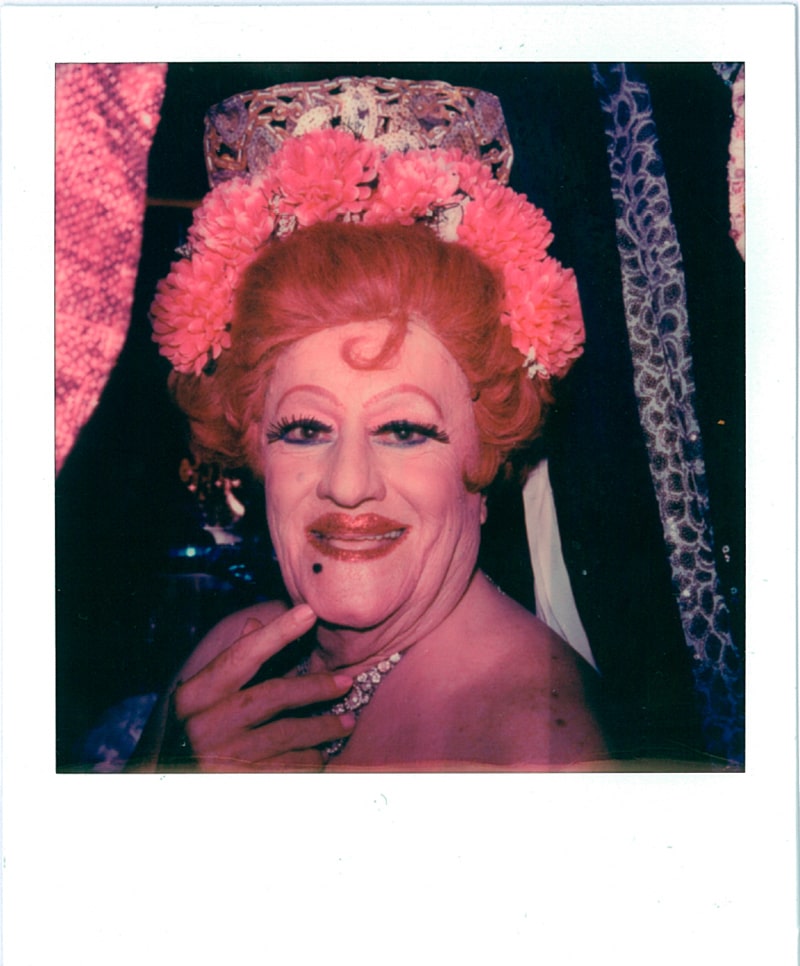
Gilda
What relationship would you say the catastrophic pandemic has with the resurgence of these new ways of understanding not only our personality, but also our sexuality? Is there a connection between both circumstances?
The pandemic has affected each person differently, I know cases of people who have had to return to their parent’s house, to the closet, delay plans to transition, not to mention the mental deterioration provoked by the lockdown. I think it just delayed a snowball that had been growing for a few years. Perhaps, now it seems that we are more aware of not taking the future for granted, even if it looks assured.
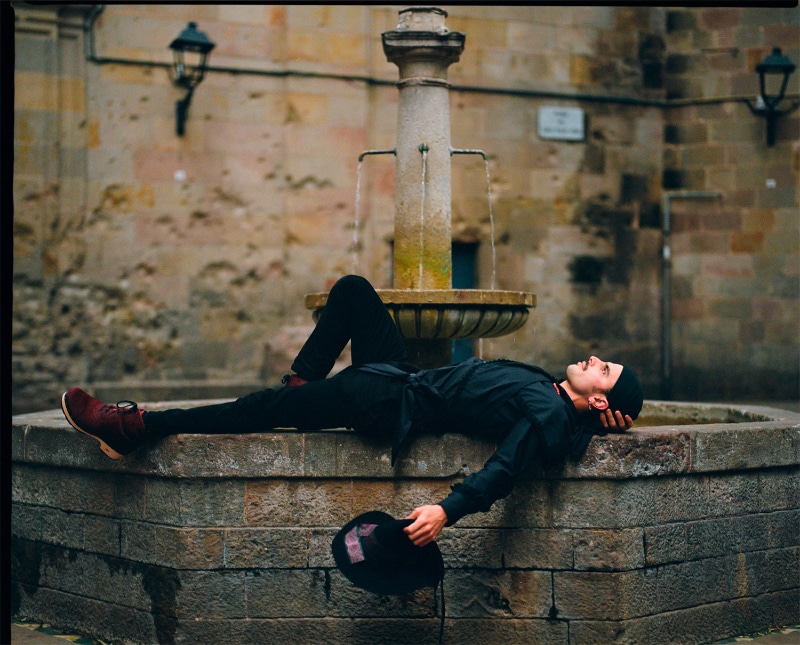
Rodrigo Cuevas
What would you say we can learn from all those people who appear in “Herencia”?
This is too personal. I would tell you that they can learn that it is never too late to start living the way you want. I always try to capture that moment of freedom and subversion. Even in the beginning, you cannot be as free as you would like, try to go at your own pace, step by step, and art can also be helpful at the time finding your true self.
How was the casting process? What led you to choose Samantha Hudson, Panterino, or Satanassa?
The word ‘casting’ horrifies me, it sounds like a fashion campaign, and luckily this has been more organic. You will see that there are many faces repeated in the book because they are or have been important people in my life. It was clear to me that this was going to be an artistic and personal testimony. Not a dictionary, not a Bible. The only thing that was clear to me was that there would be generational diversity and for me, that has not been a problem. So I can summarize for you what this book is about with two words: friendship or coincidence.
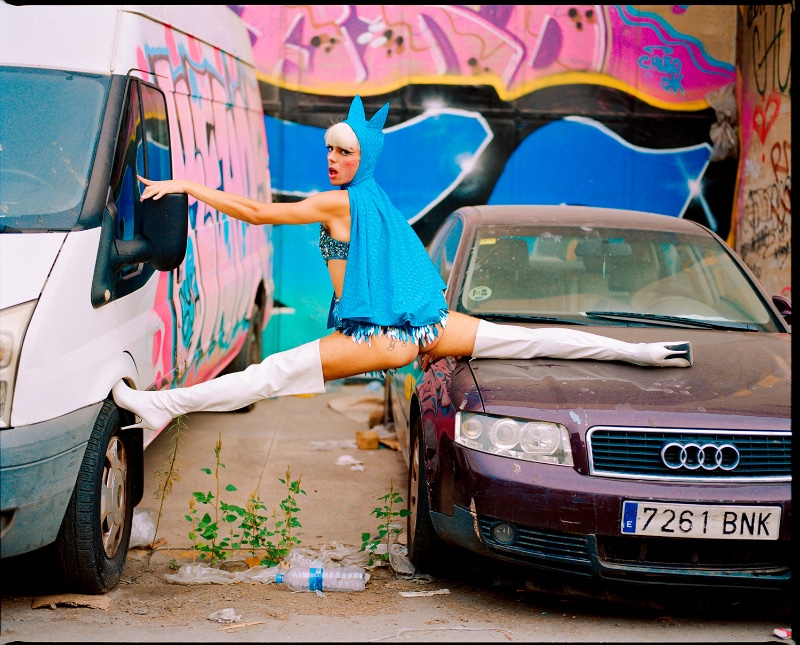
Samantha Hudson
“La Veneno”, and “Carmen de Mairena”… are women whose story has been told either in one format or another. According to Isaac, what stories would you like to see told for the general public to hear?
It would be interesting if someone explored in an audiovisual format the anarchist Barcelona of the 1930s, also known as ‘the City of Bombs’. There are documented personalities such as “Las Carolinas’ by Jean Genet in “Diary of a Thief”. In the context of that time, they were young people who cross-dressed to practice prostitution and made a funeral procession/demonstration in broad daylight when they bombed their place of work, which were some urinals at the end of La Rambla. There is also ‘Flor de Otoño, who was an anarchist who organized attacks by day and who cross-dressed in Cabaret ‘La Criolla’, by night. His identity was never known and there are hardly any documents.

Xavier
I would also like to talk about your evolution. How have you changed since you started taking photos until now when you have already published your second photobook?
The photobook has helped me understand that I can develop my work as a queer artist without being linked to the world of the night. We have to change the idea that we have been relegated to the world of the night as the only way out. I have valued the luck of having an audience that supports my projects, the book has been achieved thanks to a crowdfunding campaign. The pleasure of having been able to meet and create with artists of all kinds. All this has given me certainty about myself as a brutal artist.
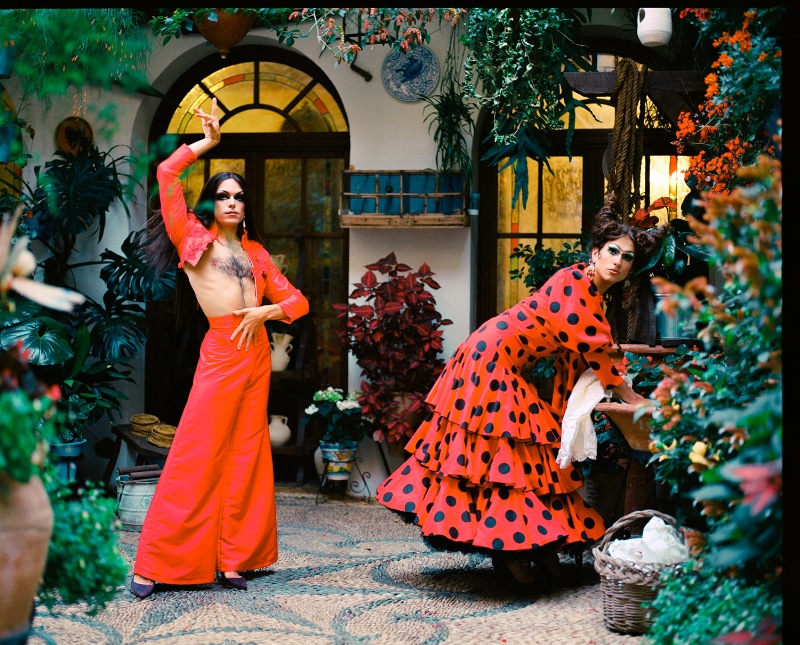
Carvento & Belial
You have enormous creative potential, what’s next for Isaac Flores?
Thank you very much. Right now I’m doing the second part of “Herencia”, then it would be a dream to be able to carry out a traveling exhibition of the two books. Right now everything is very uncertain, but I’m not going to get obsessed, what can be done will be done as always. I would not like to end this interview without thanking everyone who has participated in this project and especially Hector Aspano, graphic designer. We have spent almost six months working on the crowdfunding campaign and then giving physical form to ‘Herencia’.
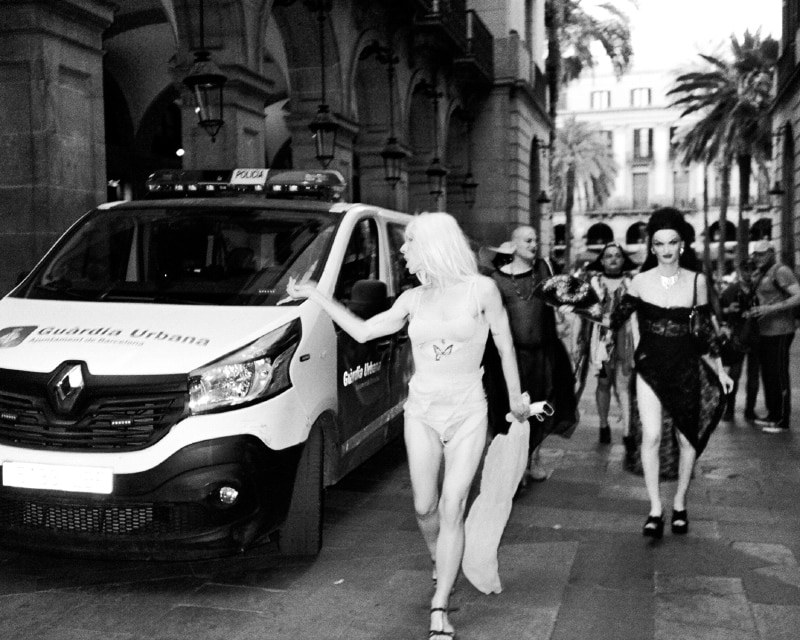
Virginia
Shop “Herencia” HERE!



